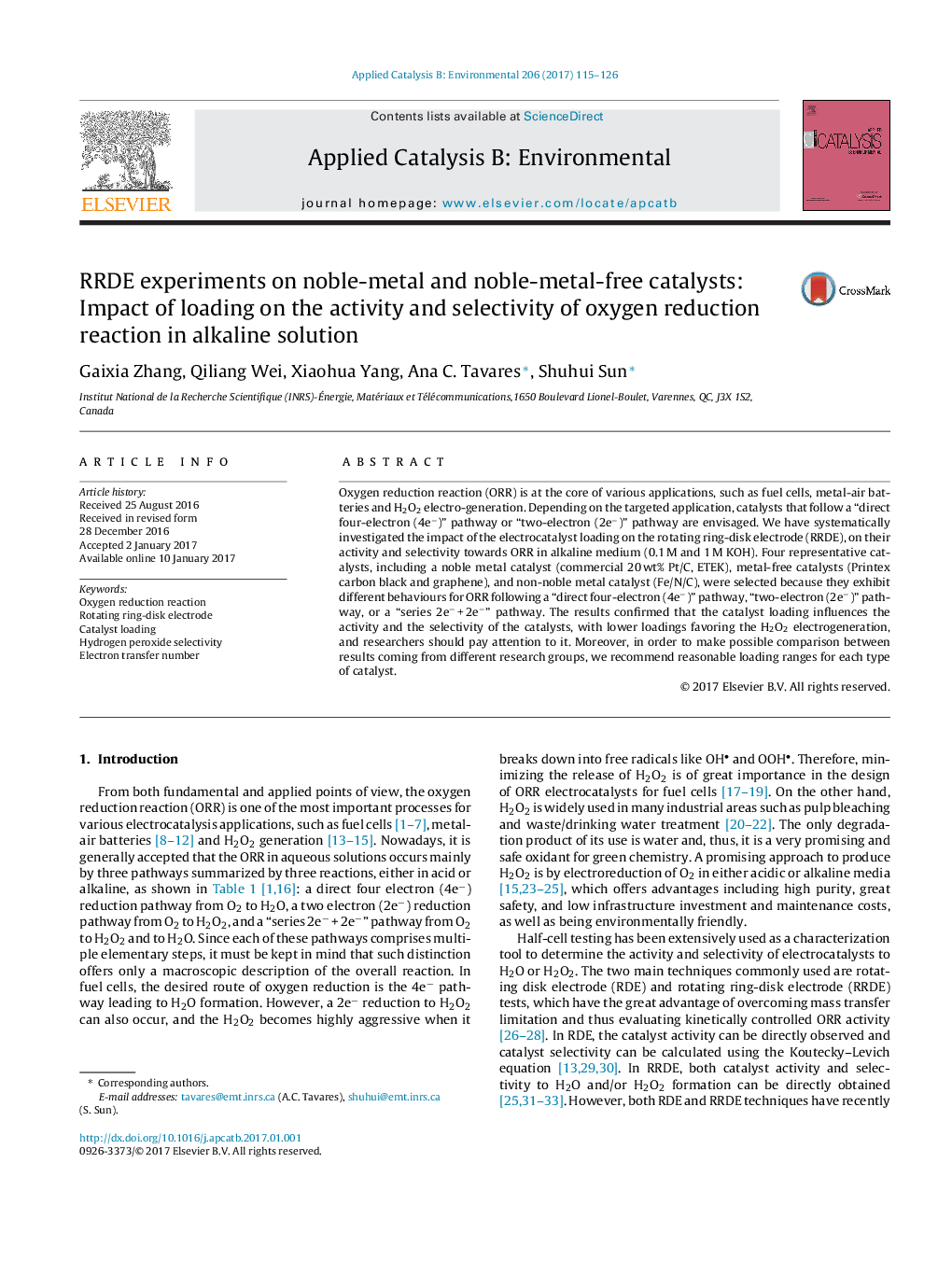| Article ID | Journal | Published Year | Pages | File Type |
|---|---|---|---|---|
| 6454648 | Applied Catalysis B: Environmental | 2017 | 12 Pages |
â¢The catalyst loading effect on RRDE was systematically studied.â¢Thinner catalyst layer and higher KOH concentration “promote” H2O2.â¢Performance of catalysts following 2eâ + 2eâ pathway is more sensitive to loading.â¢Catalysts kept similar ORR behaviours in different KOH concentrations.â¢The loading ranges for studying different types of catalysts are suggested.
Oxygen reduction reaction (ORR) is at the core of various applications, such as fuel cells, metal-air batteries and H2O2 electro-generation. Depending on the targeted application, catalysts that follow a “direct four-electron (4eâ)” pathway or “two-electron (2eâ)” pathway are envisaged. We have systematically investigated the impact of the electrocatalyst loading on the rotating ring-disk electrode (RRDE), on their activity and selectivity towards ORR in alkaline medium (0.1 M and 1 M KOH). Four representative catalysts, including a noble metal catalyst (commercial 20 wt% Pt/C, ETEK), metal-free catalysts (Printex carbon black and graphene), and non-noble metal catalyst (Fe/N/C), were selected because they exhibit different behaviours for ORR following a “direct four-electron (4eâ)” pathway, “two-electron (2eâ)” pathway, or a “series 2eâ + 2eâ” pathway. The results confirmed that the catalyst loading influences the activity and the selectivity of the catalysts, with lower loadings favoring the H2O2 electrogeneration, and researchers should pay attention to it. Moreover, in order to make possible comparison between results coming from different research groups, we recommend reasonable loading ranges for each type of catalyst.
Graphical abstractDownload high-res image (88KB)Download full-size image
